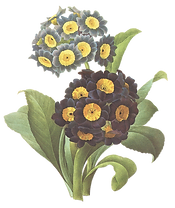Peas in a Pod
- Cynthia Thomas
- Jul 23, 2019
- 3 min read

What a show! Our peas have outdone themselves this year. The 4-foot trellis I bought for them proved to be too short, but the peas didn’t seem to mind bending over and reattaching. The flowers look like mini-orchids and their beautiful magenta color is stunning.
I had heard that this dark purple variety would still retain its green color on the inside and sure enough, those peas are just as green as if their outside jacket was the typical color. They aren’t as sweet, though, so many people feel like this is just a novelty.
But from a nutritional aspect, getting color variety in your diet is good.
The different colors you see in fruits and vegetables are a result of different pigments and each one offers different health benefits. It is generally considered, that darker the color, the greater the health benefit the produce offers. Thus; dark green romaine lettuce will have more nutrition than light green iceberg lettuce, red or sweet potatoes have more health benefits than white potatoes and so on.
‘Phyto’ or plant nutrients [from Greek phuton plant, from phuein to make grow] are protective compounds produced by plants to minimize damage from UV radiation, insect attack, toxins and pollution. Scientific research shows that many of these phytonutrients also benefit us when we eat these fruits and vegetables as a whole food.
Scientists also believe that phytochemicals provide color, flavor and smell to various fruits and vegetables while also interacting with vitamins, minerals and other health nutrients to provide the human body with several benefits. This is the main reason why colored fruits and vegetables can provide heart healthy benefits and also reduce risk of several lifestyle diseases. While a single-colored fruit contains multiple phytochemicals, I have included a list to help you know the main phytonutrient associated by plant color.
When you eat a variety of different colored fruits and vegetables, you ensure an intake of assorted nutrients which work synergistically with the phytochemicals. Hence, a pragmatic way of achieving optimal nutrition and overall health is to eat a varied and colorful diet – a rainbow or cornucopia of sorts.
Here's a list of different colors fruits and vegetables and its phytonutrients:
Blue/Purple– This color is due to anthocyanin content. Anthocyanins are antioxidants that provide numerous heart healthy benefits. The darker the blue color, the higher the concentration of phytochemicals in it. Blueberries are especially known for their very high antioxidant levels. Other fruits containing anthocyanins include: pomegranates, eggplants, blackberries, plums, prunes, and our purple pea pods 😉
Green– Green leafy vegetables are rich in chlorophyll as well as isothiocyanates. These reduce carcinogenic agents from the liver. Green vegetables like broccoli and cabbage contain several other anticancer compounds. Remember, the darker the green the better. And green cruciferous vegetables are rich in vitamin K, folic acid, potassium. Be sure to fill your diet with ample Bok choy, brussel sprouts, broccoli, dark green leafy vegetables and greens.
Green/Yellow– These vegetables and fruits are rich in lutein which is very important for eye health. Lutein is especially necessary for the elderly people to prevent age-related macular degeneration. Many of these green-yellow fruits and vegetables are also rich in vitamin C. Some examples are avocado, kiwi, spinach, pistachio nuts, etc.
Red– The main phytochemical to give the red color to fruits and vegetables is lycopene. Lycopene is a powerful antioxidant that is being researched for preventing cancer as well as heart attacks. It’s also useful for protecting prostate health and maintaining the breast tissue. Red fruits and vegetables are also rich in flavonoids, resveratrol and vitamin C as well as folates. Resveratrol is abundant in the skin of red grapes and is an antioxidant which is being investigated for its cancer preventive properties. Examples: grapes, cranberries, tomatoes, watermelons, guava, and pink grapefruit.
Yellow/Orange– Beta carotene is responsible for imparting the yellow-orange-red pigment color to certain fruits and vegetables. These are extremely rich in vitamin A and retinol - which is thought to be helpful for acne and wrinkle prevention. Vitamin A is needed for strong immune function and healthy vision. Research is showing that certain carotenoids are also useful in preventing cancers of the stomach and esophagus. Besides carrots, mangoes, peaches and apricots are good examples.

Isn’t it amazing that we need ALL the colors to get the nutrients our bodies need? No one color is complete. No one color is better. And no matter what scientist can do to alter the outside of the skin, the peas are all the same inside.
Perhaps our current social uproar could learn a lot from peas in a pod.
For more information about the benefits of growing and cooking purple veggies, click here.























Comments